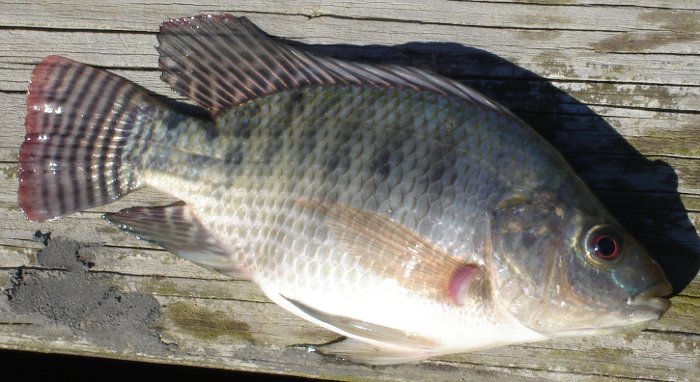The sand tiger shark is the oldest still extant species of shark, having existed for at least 65 million years. Some sources claim it first evolved during the Cretaceous Age and lived with the dinosaurs 72 million years ago, but according to the scientific literature I can find, the oldest fossils of this species were found in the Cannonball Formation located in the Dakotas, a region that was formerly undersea, and species from fossil sites here date to the Palaeocene–the era immediately following the extinction of the dinosaurs. This is still impressive longevity for a species. By comparison modern man (Homo sapiens) has existed for about 200,000 years. The sand tiger shark should not be confused with the similarly named tiger shark (Galeocerde cuvier). Although sand tiger sharks occasionally bite people, they are not maneaters. Tiger sharks definitely are maneaters. The scientific name for sand tiger shark may also cause confusion. Carcharias taurus means bull shark in Latin, but the commonly named bull shark (Carcharhinus leucas) is also a different species.


Sand tiger sharks can reach lengths of just over 10 feet long, and they feed upon fish, squid, and shrimp. They are known for preying on stingrays and smaller, slower sharks near the sea bottom at night. They rest during the day. They are the only species of shark to gulp air. This helps them retain buoyancy, so they don’t have to constantly swim like other kinds of sharks. The shark pups are born alive, the survivors of cannibalistic embryos attacking and eating each other while still inside their mother. Sand tiger sharks range in shallow coastal waters along the Atlantic coasts of North America and Europe. They also occur off the coasts of China, Japan, Australia, and South Africa. Scientists believe they were overfished to extinction in the Mediterranean Sea where they used to live.


Paleontologists found fossils of 22 species in the Cannonball Formation. This region was under ocean water until the end of the Palaeocene 55 million years ago. Sand tiger shark teeth are the most common fossil specimens found in this formation. Sand tiger sharks may be the oldest still extant species of shark, but the still extant Hexanus genus is even older. The Hexanus genus includes the gill sharks. Some species of extinct gill sharks lived 190 million years ago during the Jurassic.
Reference:
Cvancara, A.M.; and Hogansan, J.W.
“Vertebrates of the Cannonball Formation (Palaeocene) in North and South Dakota”
Journal of Vertebrate Paleontology 13 (1-23) 1993





















